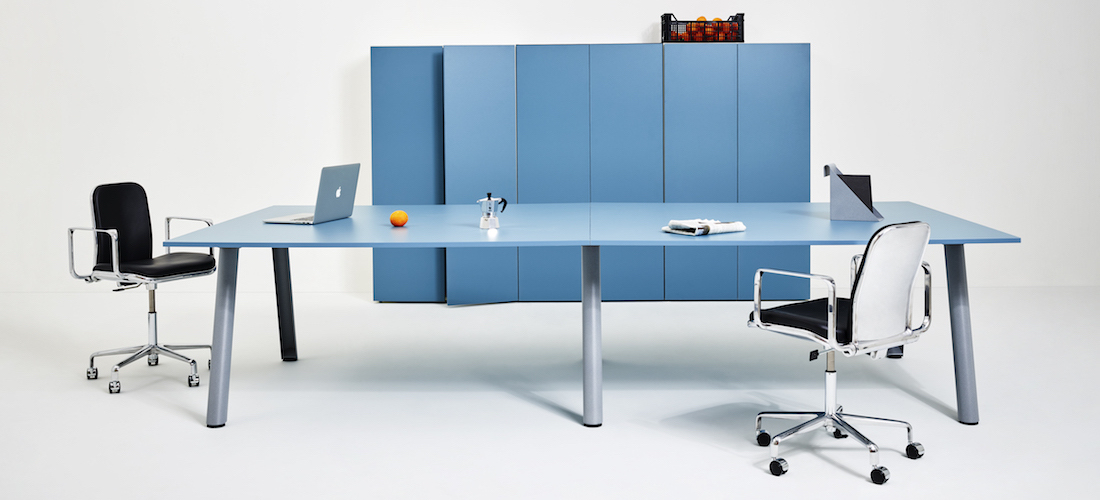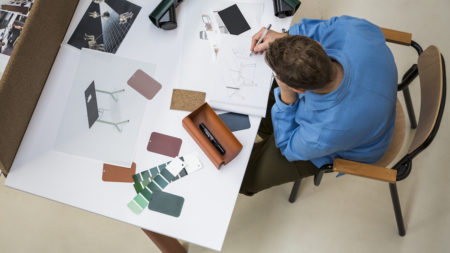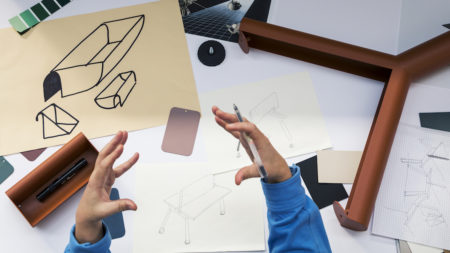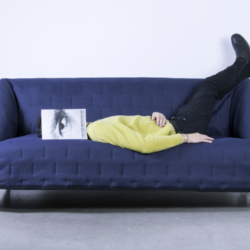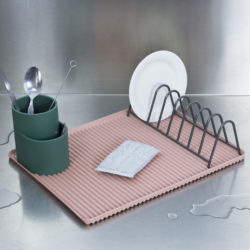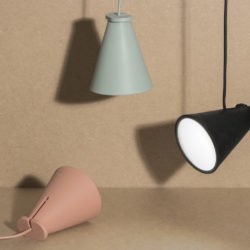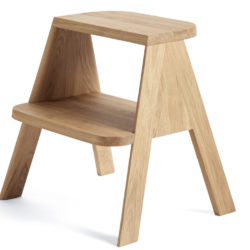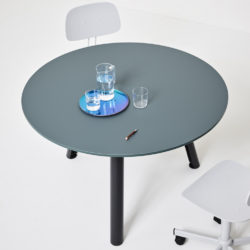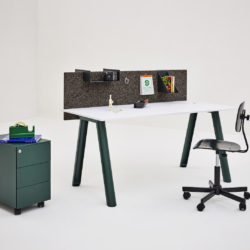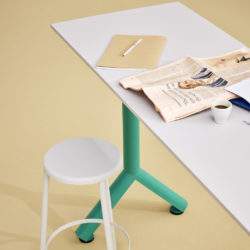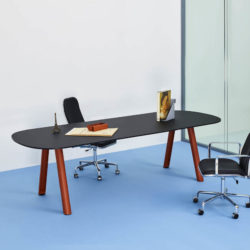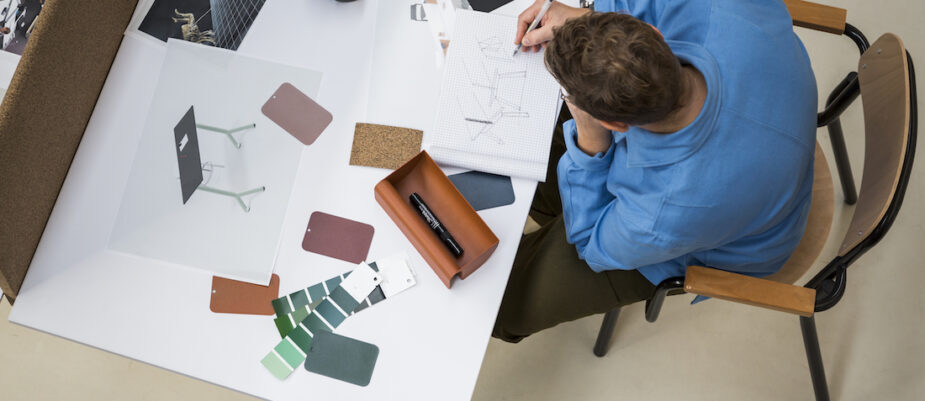
Shane Schneck’s design approach is focused on environmental sustainability and also to human-centered materials and technologies, looking for shapes and colors capable of generating surprise.
After working in Milan with Pietro Lissoni, in 2010 he founded Office for Design in Stockholm: perfectly blending these two deep but different design cultures in his light, playful and sometimes daring projects in the essentiality of their forms.
In this exclusive interview with WOW! he talks about his Ways Of Designing and tells about his latest project for Manerba: Apollo office furniture system.
He was born in the United States, worked in Italy and now lives and works in Sweden: these assumptions would already be enough to say that Shane Schneck is an international designer.
But it is above all his attitude and approach to design to express the breadth of his horizons, his mental freedom and fresh vision that translates into ostensible simple objects, always capable of bringing innovation and challenge industry standards.
His design is based on some main elements: intuition, pragmatism, observation and use of innovative materials.
Achille Castiglioni quoted “We have to design starting from what we must not do”. In your opinion what should not be done?
I think what Castiglioni was suggesting, is to use logic and intuition.
His approach to design was never dictated by style but by a method of problem solving to examine and reveal the objects purpose and use.
A while back we developed a project for Nike and our final solution was the result of ‘what should not be done’ which was only possible to know through extensive prototyping and testing.
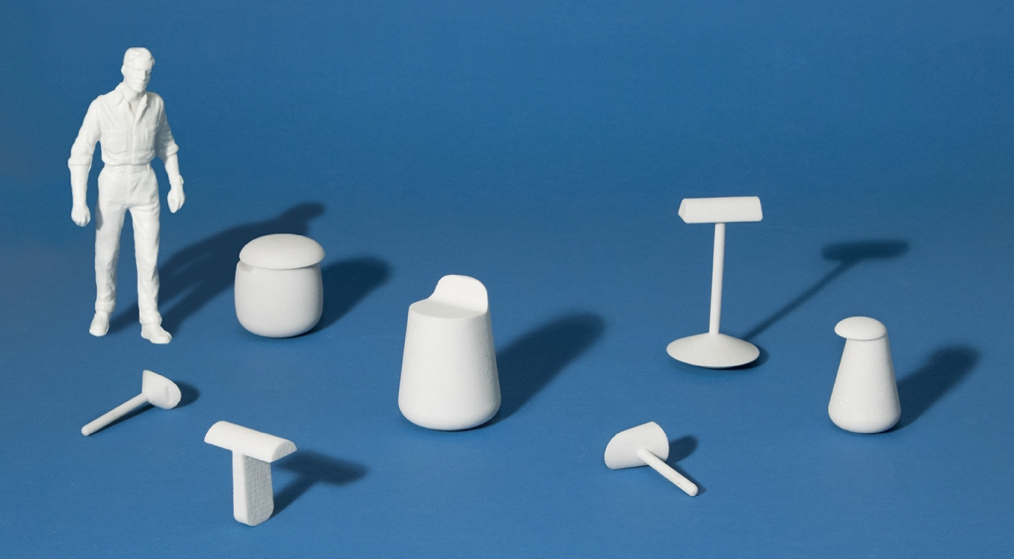
Who was your design Master?
I hesitate to use the word Design Master as all of us, as humans are designers. Of course there are those that have elevated and defined the idea of a contemporary profession whose work I adore and that is Bruno Munari, Richard Sapper and Achille Castiglioni.
Which elements and experiences featured your design approach? Are there some products that better represent your approach?
Our approach is always hands on. We start with what we feel could be a simple idea to manage cables or utilize a material in an innovative way.
We recently designed a toolbox for Hay. We wanted to create a sort of universal space to keep domestic items.
We also found an interesting way to create a handle so that it could accommodate pencils and other small things while being very ergonomic to hold.
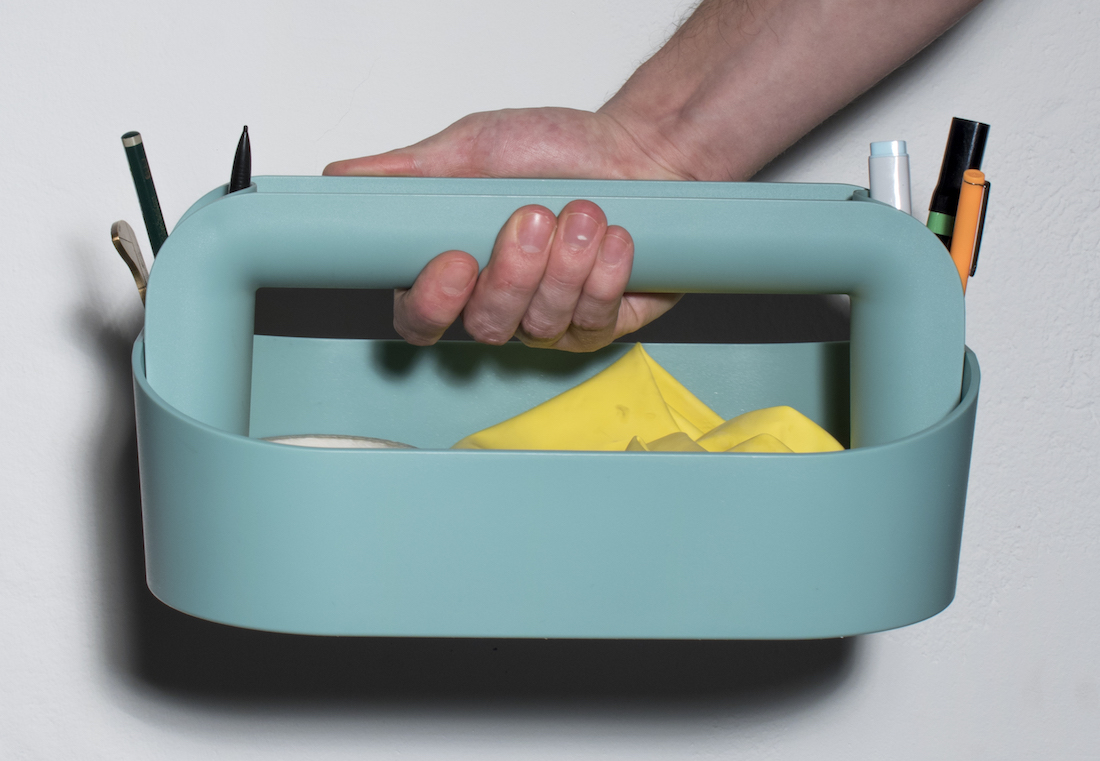
You operates on different markets and fields. Is your design approach the same with different companies or does the approach change to the different situations?
Our approach is always defined by the brief and manufacturing technology but I’m sure you will also recognise commonalities in our work.
We begin each product with 1:1 models, refining each step along the way until we have exhausted the possiblities.
Are there any conceptual contaminations and common elements between the different design areas you deals with?
Yes, one discipline feeds the other, contaminating and inspiring the process along the way. As Bruno Munari has famously quoted ‘Da cosa nasce cosa.’
How life styles and ways of working of new users -Millennials and Generation Z- can impact on product design?
As we know nothing is certain and flexibility is paramount for any company. The ability to adapt to changes requires that hardware is also adaptable and multifunctional.
The other current trend is that people seem to desire spaces that feel more like home.
I think this comes rather from a desire for well designed spaces than from the freelance generation’s wish to work from home.
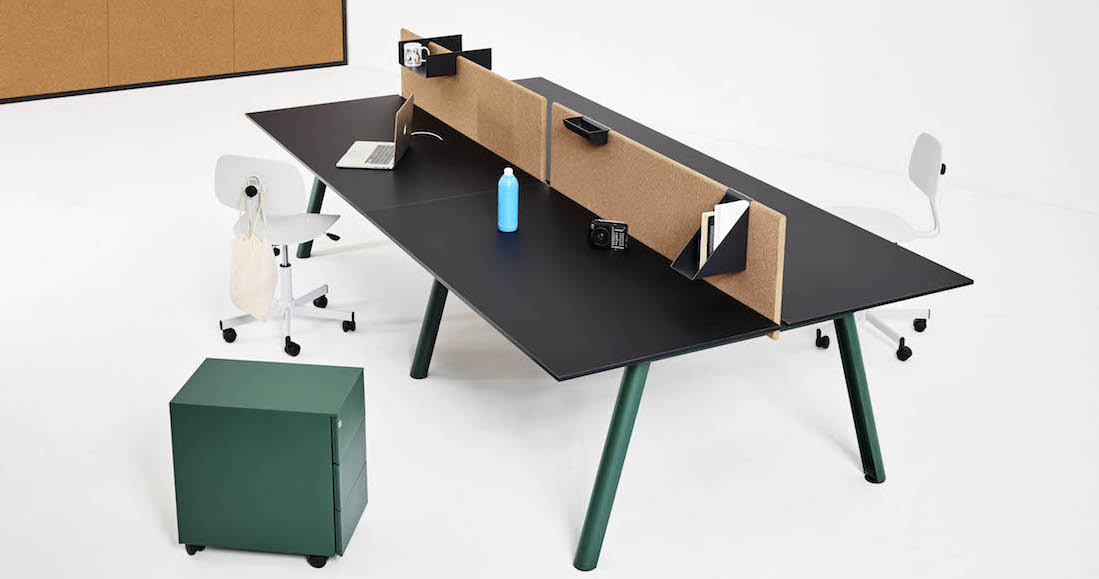
How has the workspace vision changed in the past few years and what scenarios and evolutions do you expect for the office and the ways of working in the near future?
The work space is constantly evolving but it will always require a clean surface to work if you are a chemist or an accountant.
We recently photographed Apollo system in the famed Cartiera Burgo designed by Pier Luigi Nervi and while the laboratories where created over 50 years ago and there are fewer people to maintain increased production there still is a need for orderly place to work. Automation will continue to reduce the work force but liberate humans to pursue other activities.
The other major trend is a focus on the wellbeing of the employee, so active seating and extendible height sit-stand desks will no doubt become a standard.
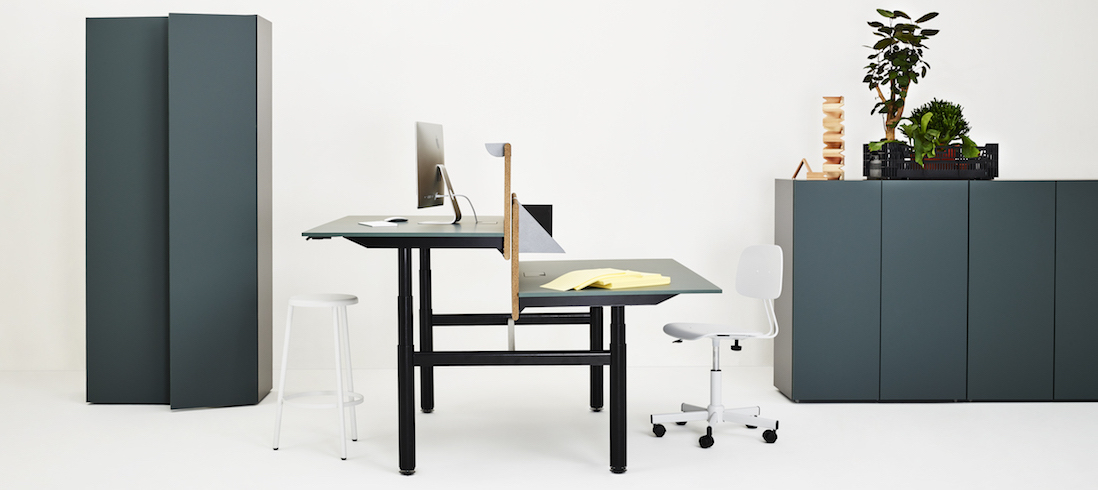
Which visions inspired the products you designed for Manerba?
I would say the entire system was driven by materials and its benefit for the environment and the user. Cork became a defining feature as it is sustainable, tactile and has acoustic performances.
We also used an Italian made thermo-laminate which has an extremely soft and matte surface for the table tops which reduces the glare for the users.
In addition we were able to use an innovative eco-sustainable surface powder coating on the legs that is made up of numerous colors, extremely durable and matte.
¨We were fortunate Manerba understood the value created by using these innovative materials that were in many cases more expensive than the standard but create a tactile and rich environment.
The other essential vision was to create an economic and modular system that is easy to install, flat pack and utilise the long history and knowledge of Manerba‘s manufacturing partners (editor note: among them Akzo Nobel for Futura Collection powder coating and Linak for electric heigh adjustment of sit-stand desks). Keeping it in the family and pushing forward innovation.
